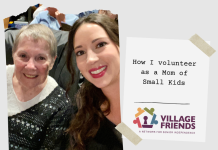Social Eating is a Form of Nutrition too!
*This series is intended to help bring ideas to support food education, and wellness in families; it is not intended to diagnose, treat, or cure diseases. Please always consult your practitioners if you have questions or concerns.
Article 4 of 4

“Social eating and time around the table with loved ones is important – there is nourishment in being with people you care about, laughing, talking and eating.” – Dr. Frank Lipman, MD
I can think of no better way to start this article than with a quote from someone I admire in the world of health. As I finish this series of food education and we approach the holiday season, I have been reflecting on what I am thankful for, my health and the health of my family is definitely something for which I am grateful. As the days pass, I watch our little girls grow and change and present their father and me with endless challenges, but at the end of the day when we sit down to the table for a meal together it seems that most of the day’s drama drips away, at least in the short-term. For others, “the table” is surrounded with stress, and on days our table is too, but I try to remain present in that and recognize that this is a brief period, and every day we try again to continue our family dinner routine no matter how it may have fallen apart the night before.
Nutrition and nourishment are not only about the food we eat or the supplements we take, it is also HOW we eat that affects our health. I find it important to stress that eating should not just be about sustenance, there is a social component in eating and many studies show eating together promotes health benefits beyond the food that is on the plate. In a study from 2014 published in the journal Nutrition Research and Practice, people who eat alone were shown to have poorer eating habits than those who eat with others. The main cause of this lower nutritional rating is a lower intake of vegetables. Vegetables have a reputation for a reason, they are a rich source of micronutrients and antioxidants – essential nutrients that help our body’s function while also protecting our DNA-.
Not only is the low vegetable intake a factor, but poorer dietary patterns tend to occur with solitary eating such as stress eating, binge eating, eating while on the go or standing up and eating while watching TV. Communal eating activates beneficial neurochemicals such as serotonin (a hormone that is a mood regulator) which is helpful in aiding with sleeping, eating and digestion.
Breaking bread together provides the opportunity to “rest and digest,” by offering a more relaxed eating environment filled with connection and conversation which slows down the eating process but speeds up the digestion process. You are allowing yourself to take breaks in between bites and that gives your body a chance to digest putting less stress on your digestive system and it regulates how much your body may be able to eat.
For children, being at a communal table offers a sense of stability and bonding plus a greater opportunity to try new foods they may not otherwise. It teaches them manners and the essentials of social eating which could help when you take your child to a restaurant, and you hope they behave in public. There are so many lessons learned in eating together from negotiation (this one my husband and I experience a lot), to problem solving, emotional expression and treating each other with love and respect.
“Our table” has such a deep meaning to us, it is because that is how my husband and I grew up, sitting around the table for dinner with our family sharing the day’s events, connecting, and bonding over a meal. We knew this piece of our pasts was a tradition we wanted to continue with the family we built. In fact, when we got married and before we had children my husband built our dining room table. We envisioned this table holding all the important friends and family in our lives, those current and ones to come. We discussed having holidays, parties, Sunday family meals and bringing people together to celebrate, laugh, cry, and create memories. We have been mostly successful at this, but over the past year our dining room table has only seen a handful of meals and guests. Our kitchen table has taken the lead but lately our three-year-old has been asking to have dinner in the dining room and it has reminded me that our table, though built for many, should not be neglected because there are only four of us.

This holiday season, I challenge you to find the nutrition in your eating; not necessarily with what you put on your plate (remember balance is key) but use the good dishes, take out the special glasses, use a tablecloth for a weeknight meal, send the kids out into the yard to find seasonal greens, pinecones or leaves to decorate your table, they will want to sit down at a table they had a hand in setting. Do not be afraid to invite people over for a meal even if they do not have children, your children will enjoy fresh faces and stories while they eat, and you will be teaching them how to communicate and socialize which in this day in age, is limited with the amount of time people spend on their screens. Over the last thirty years, family time at the dinner table and family conversation has declined more than 30% according to the American College of Pediatricians. Though we know that it is not always a possibility to sit as a family for every meal, we need to get back to these roots and take a hold of our own health. Pick a time and day that works best a meal together as a family once a week is far better than none. Who knows, your Saturday nights could turn into a Saturday night supper club where you bring friends and their families together for a potluck styled meal. There are endless ways to bring your family together for meals, but more importantly I hope you will see and feel the health benefits of breaking bread together!
Happiest of Holidays from our Family to Yours. You are all welcome to “our table” for a meal!

Read more from the author here.











